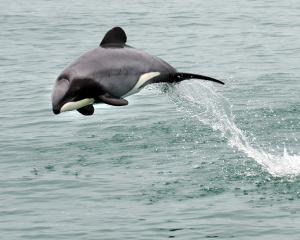
Council science manager Tom Dyer confirmed the Taieri River at Outram was found to be unsuitable for swimming 25% of the time it had been tested to date.
"So far this season, we have tested this location eight times.
"Of these, we have had two red results indicating the river was unsuitable for swimming at the time of testing.
"Both of the red results were after a period of rainfall when flows were higher than average.
"It’s not unusual to receive high bacterial results after rainfall," he said.
Information Mr Dyer supplied yesterday showed that with 11 weeks of summer testing to go, the swimming spot needed only one more red result to match its previous high of three red results in a year over the past three years.
In the summers of 2020-21 and 2017-18 the river had three red results.
Last summer there were only two red results.
In the summers of 2019-20 and 2018-19 there was only one red result recorded after testing.

Council testing was done every Monday from the beginning of December to the end of March, and re-sampling was completed as soon as possible after the council received a red result.
"There isn’t necessarily a typical time when high results might occur, as it depends on rainfall and flows.
"Heavy rain can wash contaminants into nearby waterways.
"When we receive a red result, we do faecal source tracking to identify where the contaminant might come from — for example nearby land runoff, bird colonies or septic tanks.
"Depending on the results, we investigate more broadly."
The recent red result at Taieri showed cows were the source and there was a general source which included natural causes but was neither avian nor human.
"At this stage there is no cause for concern."
The results were a reminder for everyone in Otago to be aware of what was happening in local waterways or holiday spots.
At this time of year, waterways could suffer from toxic algae and bacteria that could make them unsafe to swim in or even come near, Mr Dyer said.
The council tested 31 popular swimming sites across Otago for bacteria as well as six other waterways that were hot spots for toxic algae.
The council’s environmental monitoring team also looked for toxic algae when members were out and about during their day-to-day field work, he said.
Bacteria results from the sites tested were posted on the Land Air Water Aotearoa(Lawa) website and current toxic algae alerts could be found on the council website, he said.
"It’s important to remember that water quality can change quickly after rain," he said.
"That’s why we recommend that even for sites with generally good water quality, you avoid swimming two to three days after heavy rainfall because urban or agricultural runoff can affect the water quality."
An Otago Daily Times reporter who visited the site yesterday said people could be seen walking their dogs, or skimming stones on the water, but no-one was swimming.












